At High Point, AAPIDA announces 5 strategies to create change
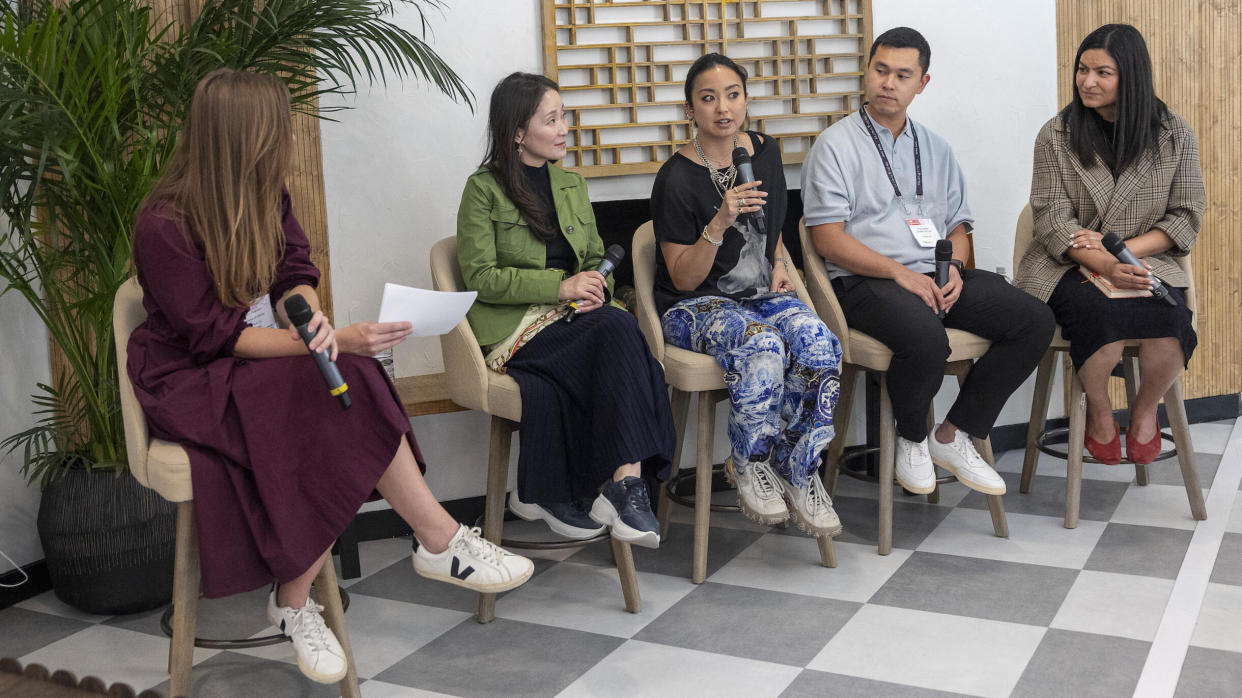
Partnership | Apr 25, 2024
Founded in 2021, the Asian American Pacific Islander Design Alliance made its official High Point debut at this month’s Market, taking center stage to address representation for AAPI members of the home and design industries. Part of the High Point Market Authority’s ongoing initiatives to promote diversity at both the semiannual furnishings fair and in the field year-round, the panel featured four luminaries—designer and AAPIDA vice president of Northern California Noz Nozawa, Swati Bansal of block-print textile brand Soil to Studio, Ray Hallare of Dowel Furniture and Lia Shin of design firm C + H Interiors—who joined moderator Kaitlin Petersen, editor in chief of Business of Home, for an insightful and honest conversation about the particular challenges of being AAPI in the design industry and how the alliance intends to counter those issues through creativity, community and collaboration. In the following excerpts from the talk, the panelists focus on the AAPIDA’s founding principles, and look ahead with hope to a more inclusive future.
Kaitlin Petersen: Advocacy, awareness, collaboration, dialogue and mentorship are the five pillars that define the mission of the AAPIDA. In terms of the changes the Alliance wants to advance in the design industry, let’s explore what each of those tenets means.
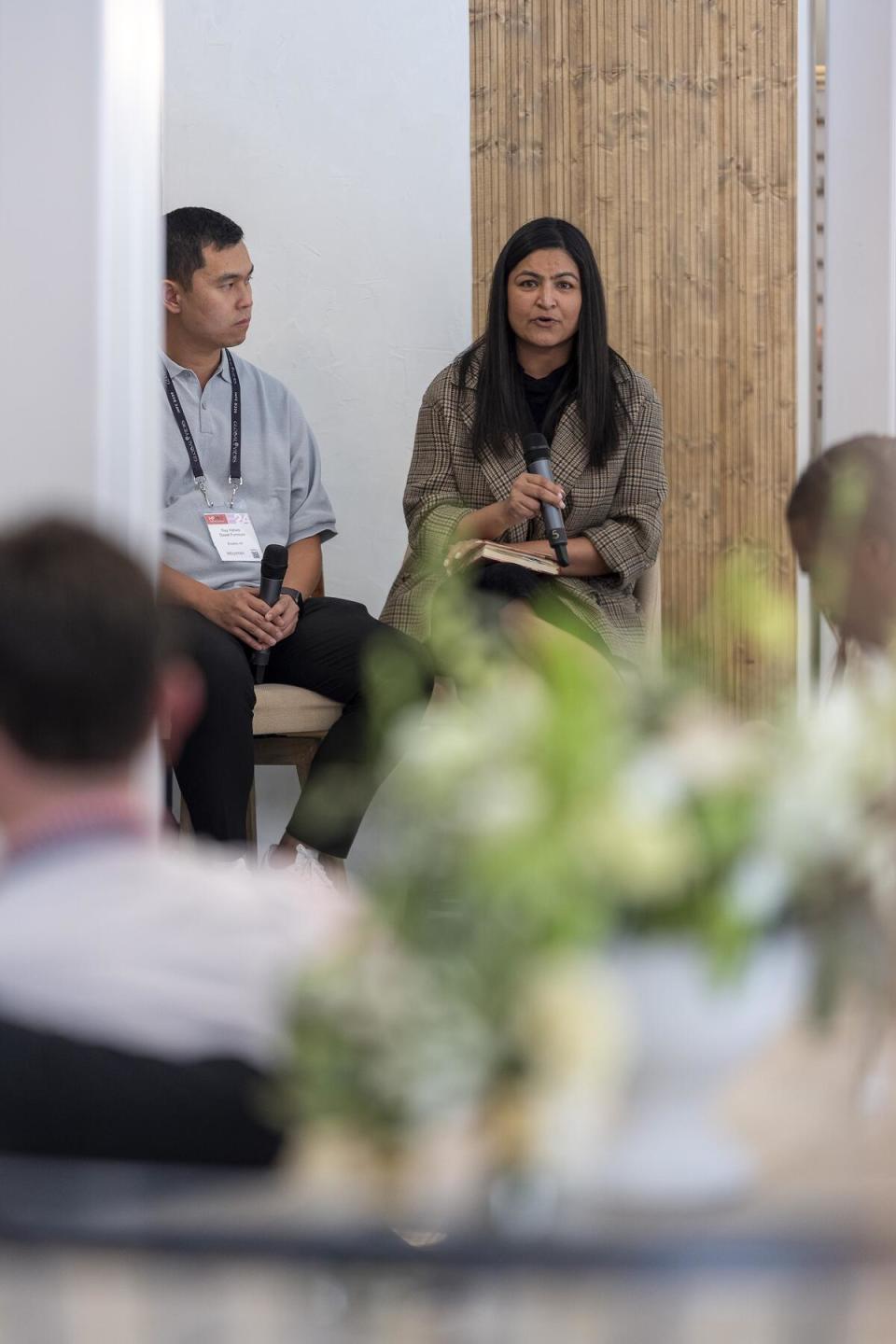
Swati Bansal: I see advocacy as being authentic to who we are and telling our stories with pride. That’s important because we don’t always know where we fit; we’ve been away from our home countries for so long that there can be a bit of an identity crisis: Am I Indian or am I American? Sometimes it’s a struggle within, but the answer, I think, is to be authentic to whatever we feel at that point in time, to be true to ourselves and to communicate it effectively. That helps other people open their minds and arms and embrace our cultures even more.
Petersen: How should the industry heighten awareness? In what ways can perceptions of AAPI in design evolve?
Noz Nozawa: At the baseline, it’s awareness that we are out here doing great work and making great textiles and furniture. Second—to state the elephant in the room—who has seen the Ali Wong stand-up special where she talks about “jungle Asians”? That’s real. There are a lot of negative stereotypes in the United States depending on what part of the Asian diaspora someone comes from. Advocacy and awareness go hand in hand, because we have to do both for the absolutely incredible, astounding creativity, ideas, originality and high-quality work that come from all parts of the diaspora: South Asia, Southeast Asia, East Asia …
I’m half Thai; I can’t just sit on my laurels as a Japanese American. There’s so much adoration for Japanese culture, and I benefit from the halo effect of: “Well, she must know exceptional craft and quality; she must be as refined as sushi.” As someone who shares my AAPI pride with people from all over the diaspora, it’s upsetting not to have the equal opportunity to say, “But do you know about DeMuro Das in New York? They make incredible furniture out of India.” Or the fact that so much of the lacework tagged as “Made in Paris” for Chanel and Hermès actually comes from Indian artisans. All the beading and embroidery for de Gournay, one of the world’s most expensive wallpaper brands, is straight out of India too. The best artisans, the best hands, are coming from places that the industry doesn’t respect to the degree they deserve. That is our next step from an awareness-building standpoint.
Ray Hallare: To drop another pop culture reference, there’s the David Chang episode where he talks about Italian versus Asian noodles: $20 for spaghetti and meatballs versus $10 for ramen. Why is it valued less? When I first saw Crazy Rich Asians, I thought, “Oh, it’s just another rom-com.” But afterward I realized its impact, the admiration it created for Asian main characters. That respect is something we can achieve in the design industry as well.
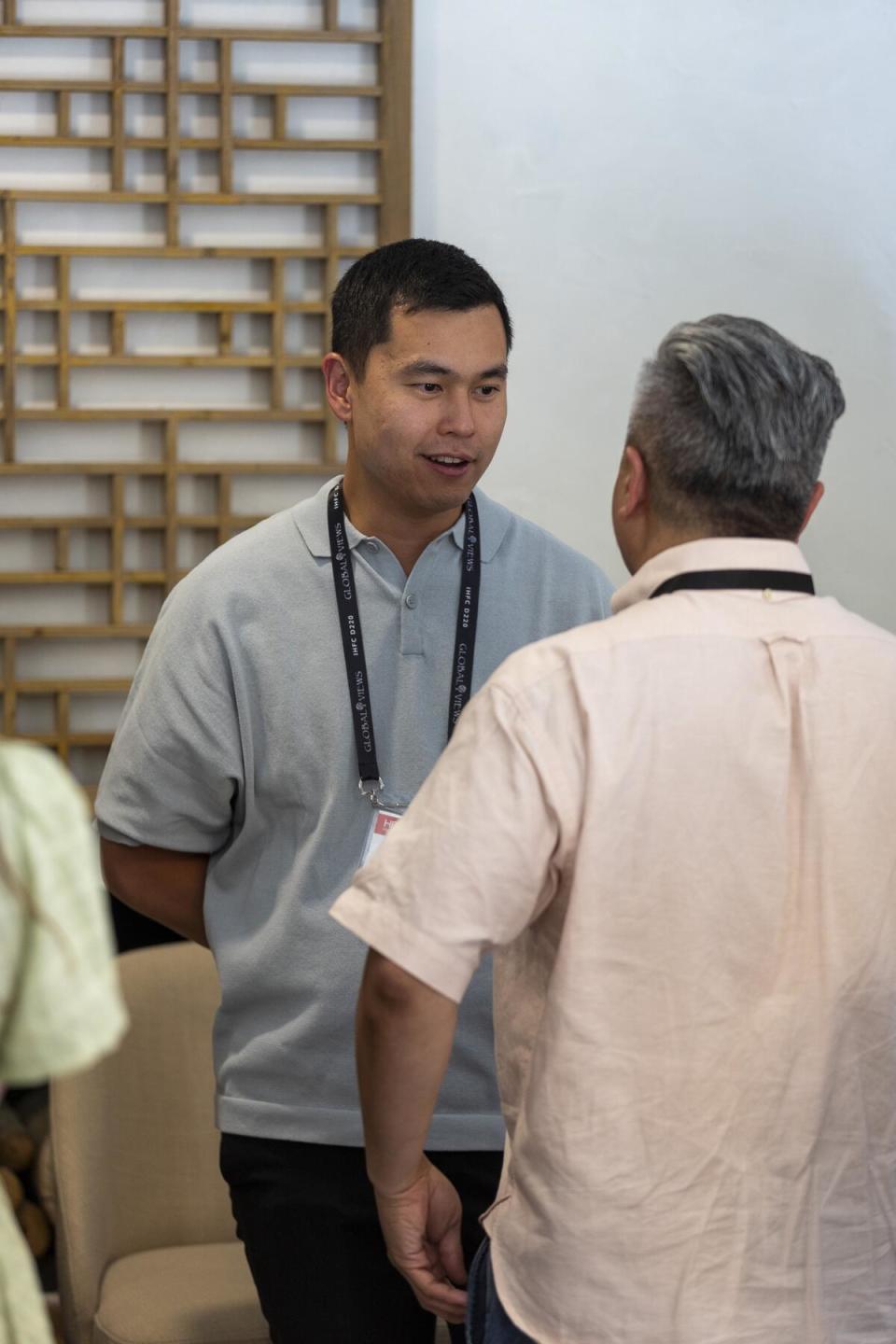
My wife grew up in Wisconsin, where the only acceptable jobs for a second-generation Asian immigrant child are doctor or lawyer; those are the only available careers in which you can be successful. Design was never an option, because there were no role models. The pillars of awareness and advocacy result in exposure: getting the word out about who we are. If there’s someone to look up to, you’re more inclined to go into that industry with confidence.
Petersen: Regarding respect for manufacturing, is there an education gap when it comes to explaining just how exquisite your furniture is, Ray?
Hallare: I always have to go back into history. People who know furniture know that the Philippines was such a big manufacturing zone in the 1980s and ’90s. It has lost its luster because manufacturing has since moved all over Southeast Asia, as well as East Asia and especially China. I always have to reeducate [clients], repeat the same spiel just to prove our quality.
Bansal: It’s almost a misuse of the artisanship, considering how it is compensated. Even though [luxury brands] outsource to India, they don’t want to credit the skill and talent, and they always think the work should be low-cost. This is one of the things I want to advocate for. The artisans who make these products are generational craftspeople creating everyday works of art. Their wages should represent that. I never negotiate [down] with my artisans, and that is reflected in our price. It’s another part of the education gap: the general misperception about the cost of manufacturing.
Hallare: People assume that pieces are easy to make, but so much goes into it: material costs, transportation, distribution. Sometimes the price is what it is because that’s what it costs to get the product here. It’s not like we’re making gobs of profit.
Petersen: How does collaboration factor into the AAPIDA’s considerations, and what kind of opportunities does it represent?
Hallare: These days, everybody has a collaboration, and it’s definitely an avenue to generate exposure. But, personally, I struggle with whether or not my brand should highlight specifically Asian designers only. I want to support those partnerships, just not necessarily all the time. I don’t have the answer, but an organization like AAPIDA would help create opportunities for people to connect, to meet up more serendipitously and realize “I make this, you make that, maybe we could work together.”
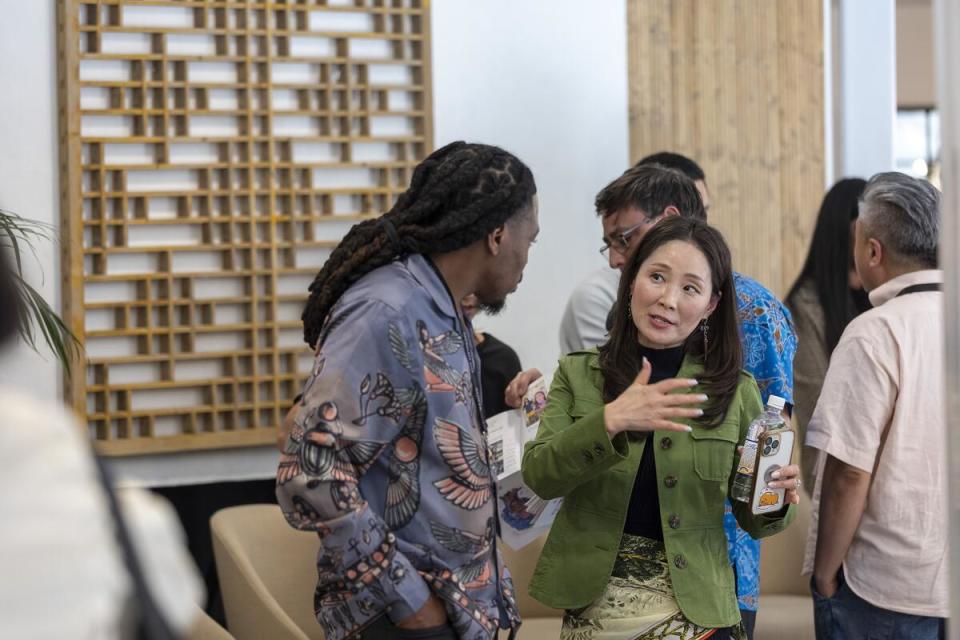
Lia Shin: Through my experience working with a lot of manufacturers doing licensing, I see the gaps [in representation]. So, what can I contribute that may benefit others and also better cultivate my craft? Collaboration has been an amazing, humbling process for me, because as egos come together, we have a lot of competing [aesthetics] that could get pretty intense. But if, right in that moment, we realize “OK, how do we fill in the gaps without stepping on each other’s toes?” it becomes an opportunity. I’m really looking forward to addressing those missing pieces through AAPIDA.
Nozawa: There’s the literal version of collaboration that Lia and Ray have mentioned, which is that so many of us are talented across different mediums and mixing it all together is cool. And then, something that’s interesting about our culture in general is that, historically, we have not collaborated or shared or organized around anything. Why did it take until 2021 for us to start this organization? Why is this our first High Point, in 2024?
Trigger warning, but as AAPI folks trying to be successful in America, we get colonized mentally into alignment with white supremacy: doing what we see the white majority do, which is not sharing. The fallacy that any of us gets to the top “by our own bootstraps” is a premise I was raised with and had to unlearn in adulthood. It takes longer for AAPI folks to organize as a collective because we largely have the mindset that by just working hard, putting our heads down and grinding, we will earn our success—instead of realizing that, structurally, there are ways we could generate a groundswell that we’d benefit from together and individually. Lack of collaboration is one of the factors that has held us back as a racial minority in the United States.
Petersen: It seems that the dialogue pillar “speaks” to this issue too.
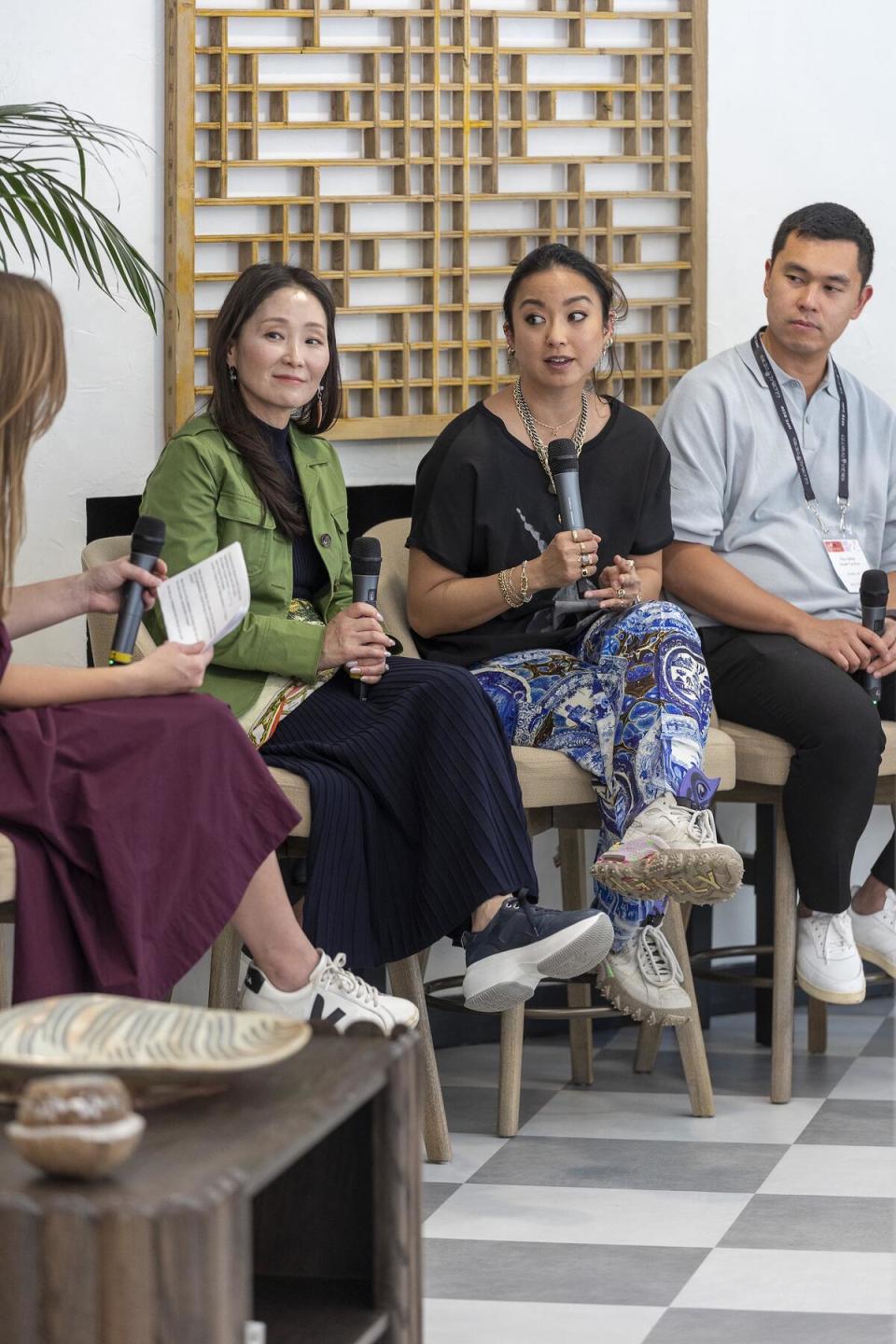
Nozawa: There’s a temptation to question: “How Asian is too Asian?” I don’t want to be tokenized, but I don’t want to pretend to ignore my heritage or my skin color either, therefore only advancing by suppressing a part of my identity that’s important to me. It’s complicated: If you do talk about it, are you being too political or too niche? And if you don’t, are you ashamed or trying to bury your identity?
Dialogue is an imperative element to lifting up the whole industry, from the manufacturers to the artisans to the designers and our clients as well. The more we talk about these issues, the more we can usher in folks who have a lot of money but don’t even know that interior design is for them. There are so many wealthy AAPI homeowners who don’t see interior design as a service they are entitled to or should invest in. Educating our potential clientele is a component of the dialogue piece.
Open discussion also allows people to become less uncomfortable around these topics. With political correctness, everyone is trying to not ask questions that could be considered offensive. Is chinoiserie OK, or should we retire it completely? Depending on whom you ask, whether it’s someone of Chinese origin who has seen their culture reduced to problematic rice paddies, there’s going to be mixed opinions. But asking ultimately makes it a safer industry for us all.
Petersen: There’s something so powerful about the dialogue we’re having here too—it requires a lot of vulnerability to own the contradictions and say, “I don’t have an answer for this,” not just about business-related issues but also cultural identity and where you fit in. On that note, I’m going to ask about the transformative pillar of mentorship.
Hallare: When I first started in the field, it took a while to find others with similar backgrounds. Having an organization dedicated to AAPI streamlines access to mentors. Because otherwise, sad to say, it takes multiple generations to build that kind of community. A lot of my second-gen friends are like, “I feel lucky to be able to choose what I want to do; my parents just focused on surviving.” The third generation, if all goes well, will have so many more options.
Shin: The type of mentorship I’m looking forward to seeing from AAPIDA is almost counterintuitive. Unlike more established designers and influencers, we see ourselves as coming up short, because the whole [concept of organizing] is new. We’re always searching more, gathering more, talking more. I want to flip the equation so that we are in the position of fostering growth even as we’re still growing ourselves. That may bring amazingly positive energy.
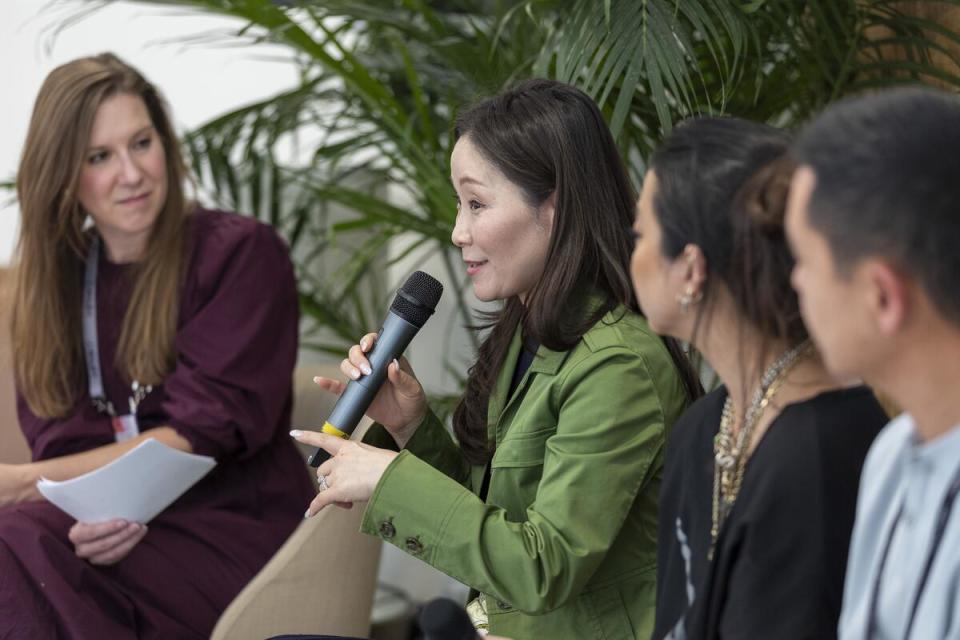
Petersen: Looking ahead, what about AAPIDA’s mission inspires you most?
Shin: This is the very first time we’re coming together as an ethnic-focused organization in which we can all share our experiences. I’m looking forward to that.
Bansal: Just the fact that we’re having this dialogue today is a great start.
Nozawa: The reason they’re called pillars is that you cannot hold up a roof without them working together. This combination of advocacy and dialogue, organizing and collaborating, raising awareness and lifting each other up, all of that is just the beginning. What comes next is what motivates me the most. How much more can AAPIDA be? How many other industries can we partner with? Just imagine how many reality TV shows we could star in, showing off what we can do with million-dollar properties.
Petersen: Noz, you helped launch the West Coast chapter and are on the AAPIDA board as well. The alliance has regional offices across the country and recently added its first collegiate offshoot, at the New York School of Interior Design. How can other interested designers get involved?
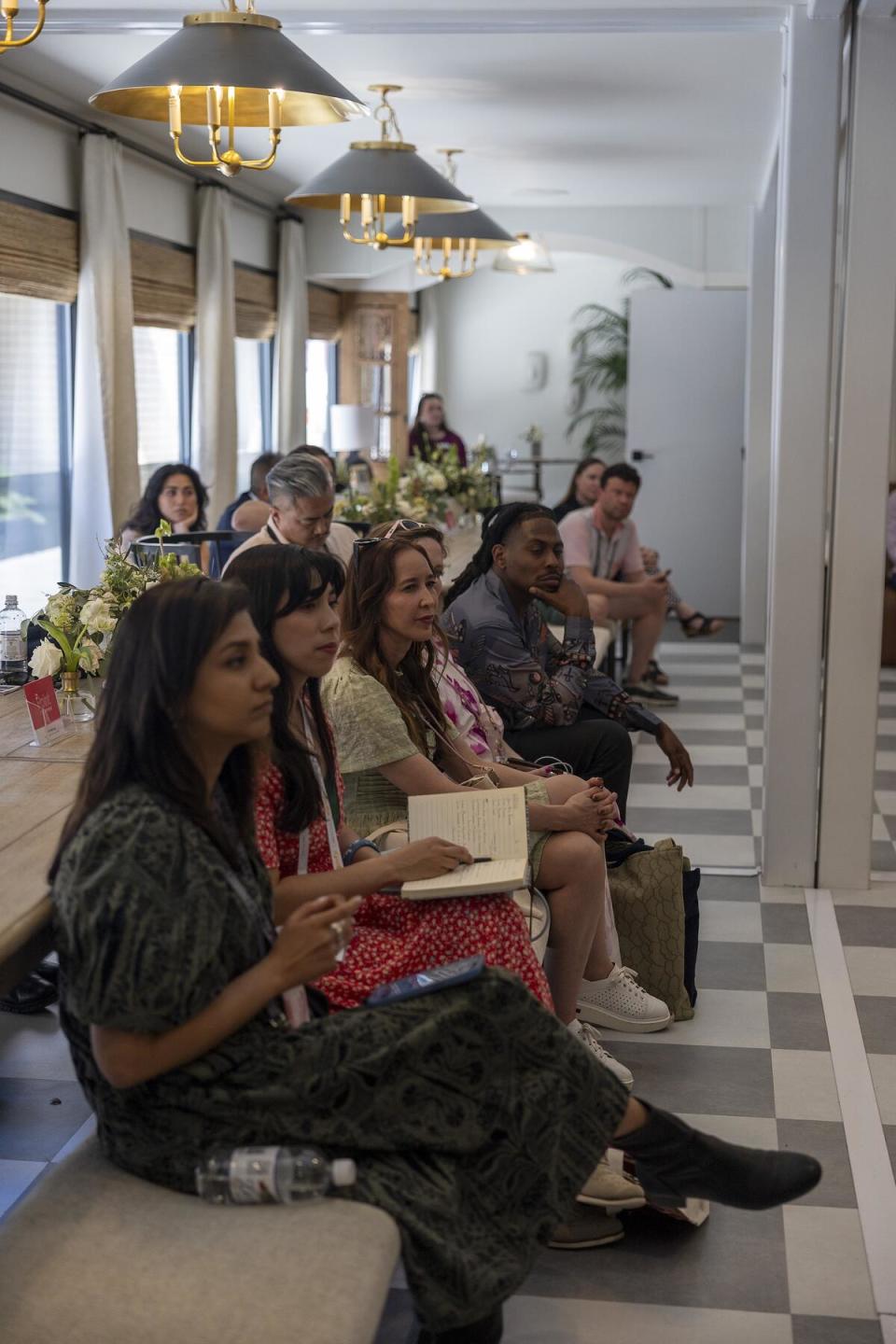
Nozawa: It’s early days. This panel is like: “Hello. Welcome. We exist. Please sign up for our newsletters, which will be distributed someday. And follow AAPI Design Alliance on Instagram.” There’s an enrollment form on the AAPIDA website, and we’ve added the question: “What pillar are you super excited about?” Because we’ve got partnerships, mentorships, internships for students in the works, in addition to community events. And involvement is not exclusive to those who are ethnically AAPI—if you want to get together for great food, conversation and art, we’re excited to have supporters who think the mission is cool. Let’s get out of our offices and connect.
This story is a paid promotion and was created in partnership with the High Point Market Authority.
Want to stay informed? Sign up for our newsletter, which recaps the week’s stories, and get in-depth industry news and analysis each quarter by subscribing to our print magazine. Join BOH Insider for discounts, workshops and access to special events such as the Future of Home conference.